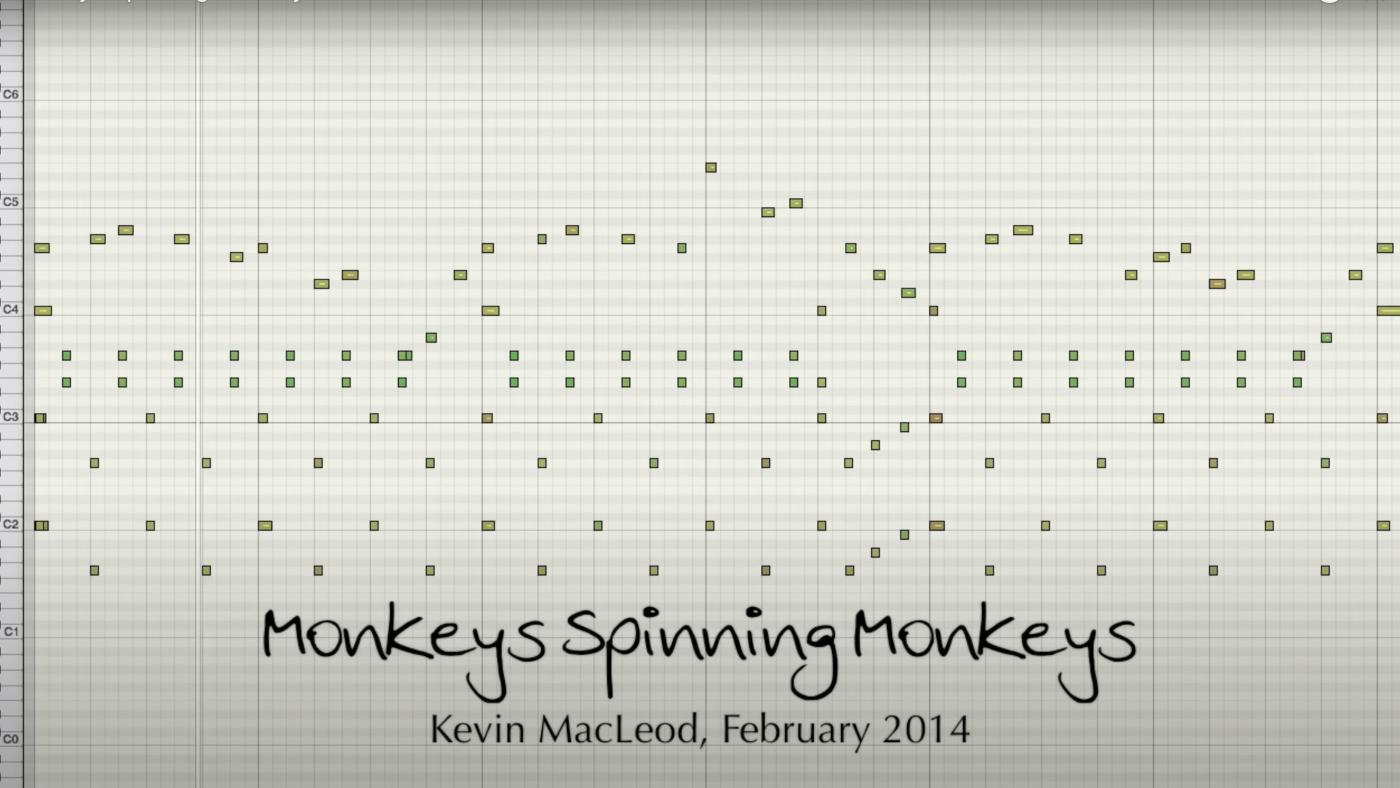Lifestyle
AI can generate recipes that can be deadly. Food bloggers are not happy

Sarah and Kaitlin Leung develop recipes with their parents for their blog, The Woks of Life.
Christine Han
hide caption
toggle caption
Christine Han
Apple released its iOS 18 this month. The update, which came with the release of the latest iterations of the iPhone, Apple Watch and AirPods, includes expanded applications of artificial intelligence, called “Apple Intelligence.” Apple isn’t the only company to integrate AI into its operating system. Samsung’s S24 devices and UI 6.1 update included Galaxy AI-supported elements, and Google phones will soon feature Gemini AI too.
Many companies have advertised a feature in their newer phones that lets users utilize AI as a recipe generator assistant. In the Apple Intelligence demo, a user asks Siri for a dinner party meal plan with ingredients they have, and the AI returns a list of recipes using those ingredients. While that seems convenient, most of the press up to this point about the relationship between AI and cooking has been negative.

Apple is integrating ChatGPT access into its newest operating system.
Apple
hide caption
toggle caption
Apple
For years, chefs on YouTube and TikTok have staged cook-offs between “real” and AI recipes — where the “real” chefs often prevail. In 2022, Tasty compared a chocolate cake recipe generated by GPT-3 with one developed by a professional food writer. While the AI recipe baked up fine, the food writer’s recipe won in a blind taste test. The tasters preferred the food writer’s cake because it had a more nuanced, not-too-sweet flavor profile and a denser, moister crumb compared to the AI cake, which was sweeter and drier.
AI recipes can be dangerous too. Last year, Forbes reported that one AI recipe generator produced a recipe for “aromatic water mix” when a Twitter user prompted it to make a recipe with water, bleach and ammonia. The recipe actually produced deadly chlorine gas.
With AI-generated recipes, casual cooks may risk a lousy meal or a life-threatening situation. For food bloggers and recipe developers, this technology can threaten their livelihood.
Sarah and Kaitlin Leung are sisters who make up one half of the family behind The Woks of Life, a food blog focused on sharing “recipes, kitchen exploits, and travels.” They started the blog in 2013 with their parents, Bill and Judy.
Recipes for The Woks of Life begin in what Sarah refers to as the “ideation phase.” “Sometimes we have a group conversation,” she says. “Sometimes it’s about fulfilling requests for recipes that we are asked for by readers. Sometimes it’s totally new and requires a lot of research and experimentation, going out to restaurants to eat that dish, watching videos, or scouring the Chinese internet for ideas.”
After an idea is conceived, the Leungs will test a recipe up to 40 times. “It took my dad like a year to come up with some of his recipes,” Sarah said. All four family members have to sign off on each recipe before it gets published. “We know that our readers are trusting us with their ingredients and time. So we try to make sure our recipe not only works but also reads well and is easy to follow,” Sarah continued.
This recipe development process is also about cultural connection and understanding for the sisters. “We had the experience of realizing that we didn’t really know how to cook Chinese food that well,” Kaitlin said. “All that is really reflected in the blog. We’re still always learning, and always trying to make sure we’re finding new techniques and ingredients.”
“The stories that surround these recipes and the connections that we make with people through these recipes — it’s so deeply human,” Sarah says. That’s why the sisters are skeptical of AI-generated recipes. “The machine doesn’t eat and the machine can’t taste. So what is it?
Andrew Olson believes AI has a place in the recipe development space. He’s a software engineer who develops recipes for his food blog, One Ingredient Chef, which has recipes focused on featuring one whole, unprocessed ingredient.
In 2019, Olson began experimenting with GPT-2, a rudimentary version of the ChatGPT software. “I was already thinking about how it could be used for recipe development and to help people come up with new creative ways of cooking,” Olson said.

Olson’s DishGen can generate recipes as well as photos of what the finished product might look like.
DishGen
hide caption
toggle caption
DishGen
In 2023, he released DishGen, a tool that harnesses AI for cooking-specific outputs. On the website, users can input a list of ingredients to generate a recipe that looks just like one from a cookbook. Each recipe even includes a headnote with a sense-based description of the final product and suggestions for when and where to serve each dish. Within the recipe, there are little flairs that evoke the recipe copy style. Cheese is sprinkled “generously,” textures are “harmonious” and muffins are “wholesome.” Premium versions of the software even generate images of what the recipe’s final product could look like.
Olson is aware of the negative press. “Google’s telling people to put gasoline in their pasta,” he says. “So DishGen has focused a lot on safety.” If you provide ingredients that may have toxic combinations, like the components of chlorine gas, the website will not generate a recipe, instead sending a short error message.
The Leungs don’t think AI recipe generators can replicate the sensory experiences and account for the same variations and special touches that human recipe developers can. “What blend of meat are you using? What seasonings are going in for the right amount of meat? How much salt is there? Is the salt affected by the addition of cheese, which is salty?” Because the AI isn’t eating or tasting the food, it instead amalgamates content pulled from the internet and uses preexisting, human-tested recipes to inform the recipes it generates on its own.
“These companies are taking content created by real people, not giving credit or attribution or any kind of compensation to the people that created the content to train their AI models, and then competing directly with those people who created that content. So it’s a huge sort of existential threat,” Sarah says.
Olson sees it differently. “So much of [recipe development] is getting inspiration from other recipes you’ve seen. Like, ‘oh, that’s cool, but I could make it a different way’ or ‘I could add something else.’ I don’t see this technology as any different,” he says. “They’re getting inspiration from what’s publicly available, but they’re not plagiarizing it or reproducing it word for word.”
“I’m not totally doom and gloom,” Sarah says. “AI — I think it can be used in a brainstorming context. You could talk about storage, how long this condiment could be stored in the refrigerator or you could talk about this particular ingredient and elaborate on it.”
Olson agrees. “I think food bloggers could use [AI] to be more creative, to come up with new ideas,” he says, “but I don’t think the technology is there to the point where you can have an entirely AI-generated blog, although that would be a cool concept. Maybe someone should try it and see how it goes.”
As the Leungs prepare for AI technology to reach that point, they are making sure their blog won’t be mistaken as AI-generated by leaning into their family stories. Many casual cooks have long complained about the lengthy and sometimes irrelevant stories they have to scroll past to find a recipe in a blog post. “Weirdly enough,” Sarah notes, “I think that people are going to be looking for those markers that a person created. Like, this is a story.”
Suzanne Nuyen edited this story.

Lifestyle
Video: Why Oakland Is Saying Goodbye to Pro Baseball

The Major League Baseball team the Athletics played their final games this week in the Oakland Coliseum, which has been their home base in California for the past half-century. They’re expected to relocate to Las Vegas for 2028 at the whim of their billionaire owner, John Fisher, and in the meantime play in a minor-league ballpark in Sacramento. Jack Nicas of The New York Times explains how the plan to build a stadium in Las Vegas is driven by a single factor — money — and what it’s meant to Oakland.
Lifestyle
Where to get free trees in Los Angeles and Orange counties

Once upon a time — well, in 1928, actually — the city of Los Angeles took the progressive step of opening the Commonwealth Nursery in Griffith Park, which over the next 50 years grew millions of trees and plants — many propagated from native seeds — for the city’s parks and public buildings.
The nursery closed in the mid-1970s and fell into disrepair, but now the city and its partners are trying to resurrect at least a portion of it to grow native trees for Los Angeles residents to plant for free in their yards.
For more than 50 years, Los Angeles’ historic Commonwealth Nursery in Griffith Park grew millions of plants for the city’s parks and public spaces, but the 12-acre nursery fell into disrepair after it closed in the mid-1970s, as this ruined greenhouse overrun with vines attests.
(Jeanette Marantos / Los Angeles Times)
The Commonwealth Nursery project, led by the city’s nonprofit contractor City Plants, and its staffing partner, the LA Conservation Corps, is just one piece of a much larger regional campaign by utilities and municipalities to increase the urban canopy of trees around greater Los Angeles, bringing beauty, shade and energy savings to city neighborhoods while expanding habitat for birds, insects and other wildlife.
That campaign involves planting trees in parkways and along streets. Many jurisdictions are also providing free trees to residents to plant in their yards, along with instructions and other support.

One of the old greenhouses at Commonwealth Nursery, with its roof partially caved in by a large fallen eucalyptus branch.
(Jeanette Marantos / Los Angeles Times)
The program doesn’t just beautify treeless neighborhoods, said arborist Carlos Campero, executive director of the City Plants program; it also reduces energy use. A strategically planted deciduous tree can cool a house during the hottest months, reducing air-conditioning needs, and provide warmth from the sun in the winter, when it drops its leaves, to reduce heating costs as well. City Plants offers an online tool to help residents find the best location for planting trees on their property to maximize their energy savings.
That buy-in makes all the difference in encouraging property owners to plant more trees, said Matthew Wells, public landscape manager for the city of Santa Monica, which began its tree giveaway program as an experiment in 2023.
The response was so enthusiastic, Wells said, that the city has more than doubled the number of trees it plans to give away this fall and next spring, from 150 to 400, and once again, it’s including fruit trees and smaller trees that can live on a balcony, because so many of the city’s residents are renters who live in small spaces.

City Plants’ fledgling native plant nursery fills a small corner of the Commonwealth Nursery’s terraced — and mostly unused — growing areas.
(Jeanette Marantos / Los Angeles Times)
Like other jurisdictions, Santa Monica provides lots of instructions to help ensure the trees survive. “For many people, this might be the first tree they’ve ever planted, so we want them to know how to look after it,” Wells said. “We don’t want it to be like, ‘Somebody gave me a goldfish and I killed it within a month. And I’ve never had a pet again.’”
Most jurisdictions, including the city of Los Angeles, are getting their giveaway yard trees from wholesale nurseries. But nursery manager Amanda Bashir Chaves said City Plants is trying to increase its native tree offerings by collecting seeds (with permission) from Griffith Park and other locations and then raising those plants in a small section of the Commonwealth Nursery — a project it hopes can expand with time.
The 12-acre nursery grew more than 500,000 plants the first year it opened in 1928, according to a history by the Friends of Griffith Park, and between 1 million to 2 million plants annually after that, while providing jobs for some 45 people. An acre-sized lath house provided shade for tender seedlings, and an innovative rainwater collection system provided water for irrigation six months of the year. Acres of terraced growing areas and multiple greenhouses produced many native plants grown from seed collected around the park such as sumacs, ceanothus, yellow-blooming flannel bush, manzanitas, barberries, monkeyflowers, Catalina cherry, toyon and coffeeberry.

Nursery manager Amanda Bashir Chaves holds up a native California buckeye sapling she grew from seed at the City Plants’ Commonwealth Nursery.
(Jeanette Marantos / Los Angeles Times)

LA Conservation Corps workers Gia Hernandez, in the orange vest, and Lorenzo Chavez planting Cleveland sage seeds at the Commonwealth Nursery.
(Jeanette Marantos / Los Angeles Times)
“In one planting bed alone, 75,000 coast live oaks were growing from locally collected acorns, a sight which astonished and amazed the 500 park employees who attended the nursery’s official grand opening in 1928,” according to the history.
It all came to an end after the passage of Proposition 13 in 1978, which limited property taxes to 1% of assessed values and more than halved property tax revenues overnight. “Budget cuts made supporting the facility and its staff untenable,” according to the history, “and as a result, the nursery fell into great disrepair.”
Today, the greenhouses are overgrown with leftover plants, their roofs smashed by giant fallen eucalyptus branches. It’s not clear what will happen to those ruined greenhouses, but Chaves and Campero hope their nursery can expand to grow large native shrubs like toyon and lemonade berry, as well as some of the non-invasive, non-native trees offered to residents, in the large unused terraced growing areas at the site, Chaves said.
More plants could mean more jobs for the LA Conservation Corps, which contracts with the city to grow and distribute trees under the City Plants program, Chaves said. So far, Chaves has been running the nursery herself, with the assistance of two Conservation Corps members, Lorenzo Chavez and Gia Hernandez, who help with the time-consuming work of planting seeds and separating seedlings into their own pots.
How to get a free tree
In almost all cases, you must be a customer of the utility and/or resident of the municipality. Some entities, like City Plants, offer trees throughout the year, depending on availability.
Others have giveaways timed to specific dates or events. Southern California Edison, for instance, offers free trees to some customers through a partnership with the Arbor Day Foundation’s Community Canopy and Energy-Saving Trees programs. Trees go quickly, but you can join SCE’s wait list or subscribe to the foundation’s newsletter to be informed of upcoming giveaways in other locations, said program manager Kristen Bousquet.
Some utilities, such as the Metropolitan Water District of Southern California, offer rebates on electric bills to customers who purchase trees.

The LA Conservation Corps, which contracts with City Plants to grow native trees at Commonwealth Nursery, is growing some endangered varieties as well, such as Southern California black walnut seedlings, left, and Engelmann oak seedlings.
(Jeanette Marantos / Los Angeles Times)
Note, too, that while Los Angeles County and several municipalities may not provide free yard trees — the county spends almost all of its $20 million budget for trees on trimming or otherwise maintaining its 170,000 street trees, said Deputy Director of Transportation Steve Burger — they will take requests to add trees to parkways in front of homes. If you live in a county-maintained neighborhood, you can fill out an online form to request that Los Angeles County Public Works plant a parkway tree.
If you don’t see your jurisdiction, contact your local municipality or power provider to find out if they offer a free yard tree program.
Tree giveaway programs
Anaheim TreePower Residential Program is a partnership between Anaheim Public Utilities and Anaheim Community Services that provides up to six free trees to be delivered to the homes of utilities customers, who can choose their trees from a catalog of nearly 50 species. Customers must sign a planting agreement and work with a TreePower representative to find the best location on their property for their trees. Customers may also purchase up to three 5-gallon trees from the nursery of their choice and get a $20 rebate per tree. The mature height of rebate trees cannot exceed 25 feet.
Altadena Heritage Committee is offering one free 15-gallon tree for residents who place a request by Oct. 15. Pickup is on Nov. 16. Five species are available: Western sycamore, Chinese flame tree, California pepper, pink trumpet tree and pink dawn chitalpa.
Burbank Water & Power, in partnership with the Arbor Day Foundation, provides up to three free trees for Burbank residents and 20 trees for Burbank businesses.
Glendale Water & Power Tree Power offers customers up to three free shade trees on a first-come-first-served basis (single family homes only). Customers can call the city’s arborist at (818) 957-4425 to participate or fill out a form online. Trees will be delivered with stakes, ties, arbor guards and an instructional DVD on tree planting and maintenance.
Grow Monrovia, a nonprofit community nursery and gardens on the grounds of the Maryknoll Sisters retirement home, is providing free oak saplings to residents of Foothills communities from Pasadena to Glendora on Oct. 7, 16, 21 and 28. Giveaway events start at 5 p.m. except on Oct. 16, when the event begins at 10 a.m.; events will feature presentations about the benefits of oak trees and how to care for them. Grow Monrovia offers tree giveaways and planting activities throughout the year.
Long Beach Tree Planting Program provides Long Beach residents with a free tree for their parkway area only (the strip of ground between the sidewalk and the curb). Wait times are typically two months or longer, and tree planting is paused between July and September due to the heat. Residents can request a tree from a list of nearly 50 available species.
Los Angeles City Plants provides up to seven free shade trees for city residents through this partnership between the city and the LA Conservation Corps. Residents can choose from a list of about 30 water-efficient species. City Plants offers regular tree giveaway events (sign up to be notified about upcoming events); you can also order trees online and have them delivered. Free trees are available for schools, businesses and apartment owners as well. Unsure whether you live in the city limits? Enter your address on the website to confirm eligibility. City Plants plants street trees in parkways at the request of residents or neighborhoods, but due to high demand, has temporarily paused that part of its program until it can complete earlier requests.
Los Angeles County does not provide free yard trees but does accept requests from county residents to plant street trees in the parkways in front of their homes.
Metropolitan Water District of Southern California offers rebates — applied to customer utility bills — of $100 per tree for up to five trees for customers who remove their turf lawns and plant trees as part of their new landscape plans.
Pasadena Water & Power Shade Trees Rebate offers a $25 rebate on shade trees purchased by utility customers for residential yards or businesses, and an extra $5 rebate if the trees were purchased in Pasadena. Trees must be at least 2-gallon size and be planted in the ground along the south- and/or west-facing walls of your home or business. Participants must purchase trees from the utility’s approved list of more than 30 species. Residents in the utility’s income-qualified bill payment assistance program get an additional $25 bonus per tree. Customers are limited to 10 trees every five years.
Santa Monica began a free tree giveaway for residents last year with 150 fruit and shade trees, which were quickly snatched up. This fall, winter and spring the city plans to increase its overall offerings to 400 trees, including trees that can be grown in containers, according to Public Landscape Manager Matthew Wells. Tree varieties include Eureka lemon, pink guava, Golden Delicious apple, coast live oak, olive, crape myrtle, California sycamore, desert willow and torrey pines. For giveaway details, follow Santa Monica on Instagram or visit the city’s events page.
Torrance residents can request that the city plant a street tree in the parkway in front of their home. The city plants an average of 400 street trees a year in its parkways, according to the website.
TreePeople is working with multiple jurisdictions in Los Angeles, Riverside and San Bernardino counties to plant more trees, and periodically offers free tree giveaways to residents of those communities, such as the 200 fruit trees it is offering Pacoima residents from 8 a.m. to 4 p.m. Oct. 12 at El Nido Farmer’s Market. Check TreePeople’s calendar or sign up for a newsletter to find out about upcoming events.
Lifestyle
How a catchy tune became the soundtrack to TikTok's silliest videos

MIDI inputs in Logic for the song Monkeys Spinning Monkeys taken from Kevin MacLeod’s Youtube channel. Unlike other artists who seek to protect the rights to their creative work, McLeod encourages anyone to use his music for free. “I just want my stuff to be heard,” he says.
Kevin MacLeod/YouTube/Screenshot for NPR
hide caption
toggle caption
Kevin MacLeod/YouTube/Screenshot for NPR
Turn to TikTok for some amusement, and you’ll find short videos of a fluffy cat cuddling a fluffy dog, a toddler clutching a bag of Doritos as though it were a teddy bear, or a penguin creating flipper-print artwork.
You’ll have to turn up the volume to hear what all these posts have in common: a song created ten years ago called “Monkeys Spinning Monkeys” by Kevin MacLeod.
Although few people know the name of the song or the person who composed it, over the past decade, it’s served as the background music for millions of TikToks and has been played billions of times. It’s also all over Instagram and YouTube.
The song’s story illustrates one of the core ways that music and social media have shaped each other over the last decade—with the proliferation of viral, loopable songs that immediately telegraph a video’s mood on digital platforms designed for ease of copying sound from video to video.
The man behind the monkeys
Kevin MacLeod is a prolific composer who got his start as a computer programmer. He created songs for fun on his computer and in front of audiences at improv comedy shows.
MacLeod’s compositions are what’s known as “library music,” stockpiles of songs that content creators draw upon to score their works. These are the sort of melodies that you would never queue up on Spotify but end up in the background of all sorts of things: video games, films, and countless short videos.
“Usually, I’ll be like watching a YouTube video and the music sucks,” says MacLeod. “And I’m like, well, let me try to do something better.”
And once he tries his hand at something better, he releases it for free.

In the early days of his career, MacLeod would craft his own licenses — not to protect his rights, but to give them away. MacLeod says his approach was to “find a license, and then do everything the opposite,” adding clauses like “you have the right to use this for your personal things. You have the right to use this commercially. You can sell this thing in another product if you want to.”
Then Creative Commons came along, standardizing royalty-free rights. While some composers and industry people argue that such sharing undermines composers’ ability to make a living, MacLeod says he just wants his work out in the world.
“I just want my stuff to be heard,” explains MacLeod. “You know, you gotta make it as easy as possible.”
Soundtracks spread with two taps of a finger
In the early days of YouTube, users posted pretty much anything regardless of copyright, says Bondy Kaye, a researcher at the University of Leeds and cofounder of the TikTok Cultures Research Network.
But with crackdowns by digital fingerprinting programs like Content ID, Kaye says people increasingly turned to royalty-free songs, including “Monkeys Spinning Monkeys.”
“And then you just follow that train as it goes all the way to TikTok,” says Kaye.
Kaye says that while YouTube lets users upload new videos, TikTok makes it easier to create videos that build off existing content with features that allow users to splice a reaction video alongside the original, take a short clip from it, or reuse the music. (Instagram also contains a similar feature.)
“So if you happen to see a viral video, with just two taps of your finger, you can create and publish a new video using that same song.”
As more people saw TikToks with “Monkeys Spinning Monkeys,” more people made TikToks with “Monkeys Spinning Monkeys,” too.
Something magical about “Monkeys”
TikTok said they couldn’t provide us with all-time numbers, but rankings by industry watchers over the last few years routinely show “Monkeys Spinning Monkeys” among the most used songs on the platform. MacLeod says that out of his 2,000 compositions, “Monkeys Spinning Monkeys” accounts for half of all listens.
“Monkeys Spinning Monkeys” contains a fluty melody and bouncy bass line— musical elements that signal “fun” to the listener.
YouTube
Even with the Creative Commons license, he’s still earned over seven figures—mostly from other countries that don’t always follow the same payment protocol.
So is “Monkeys Spinning Monkeys” just a song in the right place, with the right permissions, at the right time? Or is there something special about it that makes it such an appealing soundtrack for our favorite silly, joyful highlights?
“The answer is both,” jokes Paula Harper, a musicologist at the University of Chicago who writes about sound and the internet.
Harper says “Monkeys Spinning Monkeys” subtly uses some classic musical references, like its booming bass line.
Musicologist Paula Harper says “Monkeys Spinning Monkeys” shares some elements from classical music, like this aria by Mozart. Both songs feature a bouncy bass line that highlights the songs’ intended comic relief.
YouTube
“You can find examples going back to the 18th century where composers like Mozart are using boom, boom, boom, boom,” says Harper, mimicking the bouncing bass line, “to signify this is goofy, this is silly, this is comic relief.” For example, she points to the first aria in Mozart’s Don Giovanni, “Notte e Giorno Faticar,” when a similar baseline introduces Leporello as “the goofy comic-relief servant character.”
Then there’s a melody “that is definitely evocative of something like a calliope, like a carousel,” says Harper. A good example, she says, is the circus march “Barnum and Bailey’s Favorite,” which shares the same basic structure of a light melody on top of an alternating bass line.
The light, tinkling melody of “Monkeys Spinning Monkeys” comes from computer-synthesized flutes, but evokes the same sort of carousel or circus atmosphere as songs like the march “Barnum and Bailey’s Favorite”
YouTube
When “Monkeys Spinning Monkeys” comes on, Harper says people probably are not consciously thinking about old-timey circuses, and they’re definitely not thinking about Mozart. But together, the song plays on associations we already have to evoke a mood immediately.
Composer Kevin MacLeod acknowledges that “Monkeys Spinning Monkeys” is musically unexceptional. “I mean, the mix isn’t particularly great. The instruments aren’t particularly great…. There’s nothing sonically interesting about it,” admits MacLeod.
But it pulls together these musical ideas in a way that lets you know what’s happening, and with – he thinks – a bit of subtlety.
“It’s not assaulting you with comedy. You know, there’s not slide whistles and train horns and cars honking,” laughs MacLeod. “People like it. People use it. And it does the thing.”
That “thing” has gone from platform to platform, cat video to cat video. And no matter what happens to TikTok, the sound of “Monkeys Spinning Monkeys” will likely be stuck in our heads for years to come.
-

 News1 week ago
News1 week agoSecret Service Told Trump It Needs to Bolster Security if He Keeps Golfing
-

 Business1 week ago
Business1 week agoU.S. Steel C.E.O. Says Nippon Deal Will Strengthen National Security
-

 Politics1 week ago
Politics1 week agoNew House Freedom Caucus chair reveals GOP rebel group's next 'big fight'
-

 News1 week ago
News1 week agoToplines: September 2024 Inquirer/Times/Siena Poll of Pennsylvania Registered Voters
-

 News1 week ago
News1 week agoDisney trips meant for homeless NYC students went to school employees' families
-

 Politics1 week ago
Politics1 week agoBiden admin moves to reinstate Trump-era rule, delist gray wolves from endangered species list
-

 Politics7 days ago
Politics7 days agoDem lawmakers push bill to restore funding to UN agency with alleged ties to Hamas: 'So necessary'
-

 World1 week ago
World1 week agoWhat’s South Africa’s new school language law and why is it controversial?


















